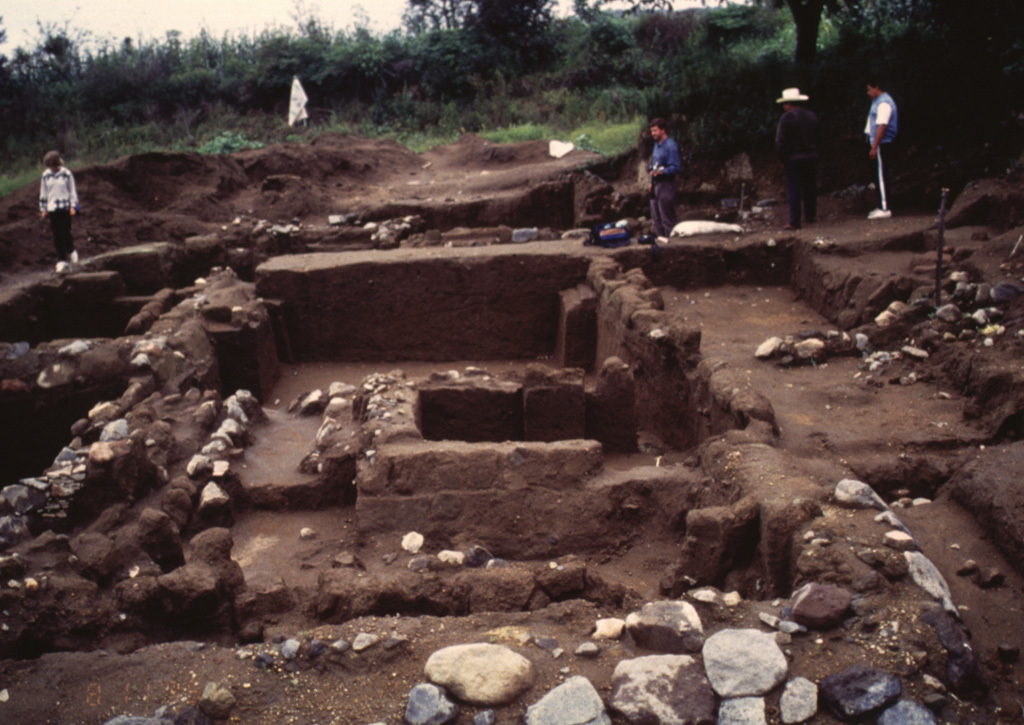Image GVP-07477

An archaeological excavation on the northern flank of Popocatépetl reveals a village destroyed by a major eruption. The site, known as Tetimpa, was buried by roughly 1 m of tephra around 2,500 years ago. The eruption is known as the Lower Ceramic Plinian Eruption, in reference to the archaeological materials. This small village was constructed on top of an older pyroclastic flow deposit formed during another Plinian eruption about 5,000 years ago.
Photo by José Macías, 1995 (Universidad Nacional Autónoma de México).
![]() This image is made available under the Creative Commons BY-NC 4.0 license terms.
This image is made available under the Creative Commons BY-NC 4.0 license terms.
Galleries: Human Impacts
Keywords: human impacts | deposit

Popocatépetl
